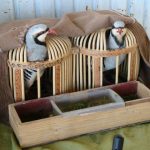As night bus rides go I suppose the run from Göreme to Adiyaman could have been worse if only it hadn’t got me into town at 5.30am. What does one do in a strange town at such an hour? Stroll pathetically along the street pausing to admire the museum’s splendid rose garden in the forlorn hope that anyone passing by would think that was why I was up and about at such a ridiculous hour? In the back of my mind I have the idea that there’s a pension called the Beyaz Motel somewhere near here but if there is it’s keeping a very low profile and after one turn up and down a side street in company with the crack-of-dawn mosque-goers I cave in and head for the smart Büyük İskender Hotel right on the main square. Newly refurbished, it’s in the business of buttering up visitors and I’m offered breakfast even before I check in.
My, what a relief to get my head down for an hour or so before my friend, the photographer Rebecca Erol, flies in to join me. But our schedule is tight and as soon as we’ve got ourselves sorted we head back to that museum. The roses may be splendid but the contents are another matter. This is one of those rather sad provincial museums (See The Museum Experience) housed in a building way too big for it so that the glass-cases seem to rattle around in empty space filled with offices occupied by bureaucrats who certainly don’t see their job as involving either dusting the exhibits or providing them with proper labelling. Ah, but admission is free which does at least mean it has some visitors, families drawn in to while away some of the first few hours of the never-ending three-month school holidays.
The museum out of the way, we do what I like doing best which is poking about in the back streets. We duck into the unexpectedly colourful bazaar but just as I’m waxing lyrical about its wonders the heavens open and there we are, trapped in a kebab shop with nothing to do but drink tea and listen to the owner boasting about his offspring’s success in getting into university. As ever, I’m overwhelmed by this evidence of the speed of Turkey’s development. In the space of a generation this family has rocketed from the hand-to-mouth kind of existence of a market eatery to within spitting distance of the professional occupations. I hear the same stories all over Turkey and they always give my spirits a boost.
Like most such long-lived markets, Adiyaman’s is housed in a ragbag collection of elderly buildings, some, such as the ruinous han, hailing back to the Middle Ages, others belonging to the end of the 19th and early 20th centuries. As ever, too, there are hints in the buildings that they were originally built by non-Muslims. We wander, for example, into the charming little Hısnı Mansur tea house. It’s stone-built, its lofty windows topped with curved fanlights, and reminds me immediately of the wonderful Taş Kahve on Cunda. That was Greek and I wouldn’t mind betting that this was too.
When the rain finally lets up a tap-tap-tapping sound leads us to the copper beater’s part of the market where we find men working on mammoth cauldrons that take days at a time to complete. There are only a handful of them left and presumably their days, too, must be numbered. When I came to live in Göreme most families were still making their own pekmez in cauldrons just like this but somehow I can’t see their smartly dressed, educated daughters, many of them with paid jobs, bothering to keep up the tradition, especially given the inherent dangers of boiling sugar in vast vats in the open air. Last year an elderly member of our community tripped and fell into the bubbling liquid as she lent to place a pot of stew to simmer in the fire beneath it. She died of her burns. Why would anyone risk it when you can buy pekmez pre-prepared in jars like jam nowadays?
In the bazaar we find the Çarşı Cami with its minaret collapsed. Weakened by an earthquake in 1986, it finally succumbed in 2007 since when no one has got round to clearing away the rubble. The Ulu Cami is much more impressive, and from its age and shape I wonder at first if it didn’t start life as a church. No, says the imam, although its architect was an Armenian. He proceeds to extol the virtues of Islam to me while taking care to emphasise that there is nothing wrong with Christianity either. But Mohammed’s was the last message, he says over and again, and so it must be the right one.
It’s a source of never-ending amazement to me, the least religious of people, how frequently I am subjected to lectures that are presumably intended to get me to change my heathen ways. In the back of taxis, at picnic spots in the countryside, on over-crowded dolmuşes (and, of course, in mosques) – I’ve given up trying to keep track of the many places where I’ve been obliged to listen to uninvited religious diatribes, nodding politely and biting my lip against the instinct to leap in and start arguing the toss. Usually the people who do this to me are pleasant, well-meaning individuals so it would be churlish to have a go at them. This, according to Paul Harris, makes me the worst of all people. If someone said the Earth was flat, you would challenge them, he points out, so why don’t you do so when people make equally nonsensical religious assertions? I take his point while knowing that I’m too old to change. Besides, who can ever win these arguments? “The Koran says that television is wrong,” my Pakistani newsagent once told me. “No, it doesn’t, Mrs Khan,” I replied. “How could it? The Koran was written in the seventh century and TV didn’t appear until the 20th.” Do you think she believed me? I’ll leave you to work that one out.
After lunch we head out to Pirin, site of the remains of the ancient city of Perre. It being the summer holidays the sprawling necropolis is serving as a giant outdoor playground for youthful Turks with not another yabancı (foreigner) in sight. Once again I’m struck by Turkey’s extraordinary wealth of archaeological remains. In the UK this would be a major site. Here’s it’s so much of an also-ran that even after almost twenty years of exploring the country I had never heard of it. There are tombs here in a variety of forms – rock-cut family burial plots, giant Lycian-style sarcophagi, underground tombs accessed down flights of stairs – and they are cut so deep into the ground that you can see the layers of rock clearly defined in different shades of brown and pink. We don’t see anything that could be described as the “town” though. Maybe we missed it?
Written: 20 May 2011


